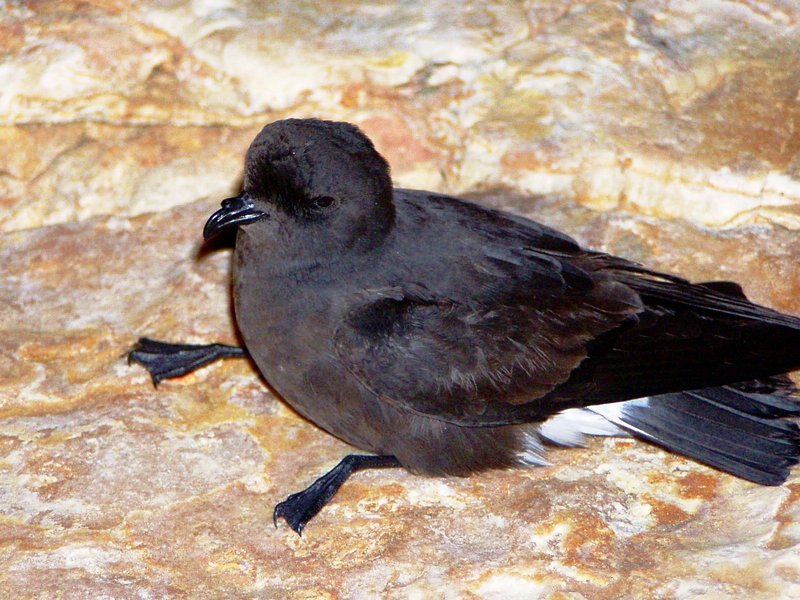|
| 질의: Rock martin | 결과: 52번째/66 | |
European Storm-petrel (Hydrobates pelagicus) - Wiki
| 제목: | European Storm-petrel (Hydrobates pelagicus) - Wiki
| |

| 해상도: 1600x1200
파일크기: 435149 Bytes
촬영일: 2004:06:18 23:30:35
사진기: C720UZ (OLYMPUS OPTICAL CO.,LTD)
F number: f/2.8
Exposure: 1/160 sec
Focal Length: 2950/100
등록시간: 2007:12:13 16:29:09
|
European Storm-petrel
From Wikipedia, the free encyclopedia
Order: Procellariiformes
Family: Hydrobatidae
[Photo] European Storm-petrel (Hydrobates pelagicus), Vila do Bispo, Portugal. Photographed on rock cliff upon release after being ringed. Date 18 Jun 2004. Author J??lio Reis (http://commons.wikimedia.org/wiki/User:Tintazul).
The European Storm-petrel or Storm Petrel (Hydrobates pelagicus) is a small bird of the storm-petrel family, Hydrobatidae, part of the seabird order Procellariiformes. It is the only member of the genus Hydrobates.
It breeds on inaccessible islands in the north Atlantic and western Mediterranean, with the core population in western Ireland, northwest Scotland and the Faroe Islands, where the worldwide biggest colony breeds on the island of N??lsoy. It nests in colonies close to the sea in burrows or rock crevices. It lays a single white egg.
It is strictly nocturnal at the breeding sites to avoid predation by gulls and skuas, and will even avoid coming to land on clear moonlit nights. Like most petrels, its walking ability is limited to a short shuffle to the burrow.
The Storm Petrel is a small bird, only the size of a House Martin, which it superficially resembles with its dark plumage and white rump. It is 15-16 cm in length with a 38-42 cm wingspan. It has a fluttering flight, and patters on the water surface as it picks planktonic food items from the ocean surface.
It can be distinguished from Leach's Storm-petrel and Wilson's Storm-petrel by its smaller size, different rump pattern and flight behaviour. It is strictly pelagic outside the breeding season, and this, together with its remote breeding sites, makes Storm Petrel a difficult bird to see from land. Only in Atlantic storms might this species be pushed into the headlands of south-western Ireland and England.
This species is, however, readily seen from ships, which it will follow. It is attracted by "chum" (a mixture of fish offal, fish oil, popcorn and sometimes dimethyl sulfide) used by birders to lure seabirds, and an apparently empty ocean will soon fill with hundreds of these birds.
It is familiar to sailors, and much folklore is associated with this harbinger of stormy weather. Its most common folk name is "Mother Carey's Chicken", perhaps derived from "Mother Mary".
http://en.wikipedia.org/wiki/European_Storm-petrel
| The text in this page is based on the copyrighted Wikipedia article shown in above URL. It is used under the GNU Free Documentation License. You may redistribute it, verbatim or modified, providing that you comply with the terms of the GFDL. |
|
^o^
동물그림창고 똑똑전화 누리집
^o^
|
|

